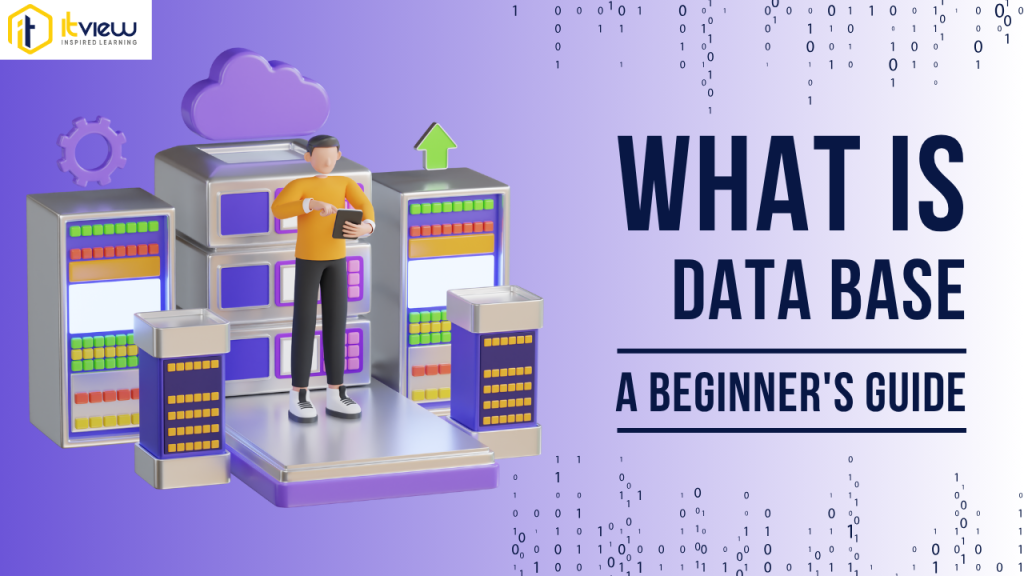In today’s data-driven economy, the database is the backbone of every digital system. From ecommerce checkouts to AI-powered recommendation engines, a database ensures data is stored, retrieved, and analyzed effectively.
For data analysts and engineers, knowing the types of databases, their use cases, advantages, and limitations is critical in building scalable analytics solutions. This is why many data analytics courses in Pune emphasize hands-on learning with different databases, helping students connect theory with real-world analytics applications.
What is a Database?
A database is an organized collection of structured or unstructured data managed by a Database Management System (DBMS).
It allows:
- Efficient storage of data.
- Fast retrieval and querying.
- Secure multi-user access.
- Consistency and reliability of information across applications.
Why Databases Matter in Data Analytics
Databases are the foundation of modern analytics, enabling:
- Centralized storage instead of fragmented spreadsheets.
- Faster queries with indexing and optimization.
- Integration with BI tools (Tableau, Power BI, Looker) and data platforms (Snowflake, Databricks).
- Governance, compliance, and secure access management.
📊 Companies adopting cloud-native databases report 34% faster insights delivery than on-premises-only users.
Most of the best data analytics courses in Pune now highlight database proficiency as a core skill for aspiring analysts because it directly impacts the speed and quality of insights.
Types of Databases
- Relational Databases (RDBMS)
Store data in structured tables (rows and columns).
Examples: MySQL, PostgreSQL, Oracle Database. - NoSQL Databases
Schema-less and flexible for unstructured or semi-structured data.
Examples: MongoDB, Cassandra, Couchbase. - In-Memory Databases
Data stored in RAM for lightning-fast access.
Examples: Redis, SAP HANA. - Cloud Databases
Delivered as DBaaS with elastic scaling.
Examples: Amazon RDS, Google BigQuery, Snowflake. - Distributed Databases
Data spread across multiple nodes/servers for availability.
Examples: CockroachDB, YugabyteDB. - Graph Databases
Store relationships as nodes and edges.
Examples: Neo4j, Amazon Neptune. - Time-Series Databases
Optimized for timestamped/temporal data.
Examples: InfluxDB, TimescaleDB. - Object-Oriented Databases
Store data as objects, aligning with OOP.
Examples: ObjectDB, db4o.
Examples of Popular Databases in 2025
- Snowflake – Leading in cloud-native analytics.
- Databricks Lakehouse – Unified data warehouse + data lake.
- Google BigQuery – Serverless analytics powerhouse.
- PostgreSQL – Open-source RDBMS with massive adoption.
- MongoDB – NoSQL leader for unstructured data.
- Redis – Real-time in-memory database.
📊 Snowflake and Databricks combined hold 40%+ of enterprise analytics market share.
Advantages of Databases
- Centralized management of data.
- High performance with indexing and query optimization.
- Scalability in cloud and distributed models.
- Data integrity with ACID compliance (in RDBMS).
- Strong security and access control.
- Seamless integration with analytics and AI tools.
Disadvantages of Databases
- Complex setup and maintenance.
- High licensing or subscription costs.
- Requires skilled DBAs and data engineers.
- Performance issues if not modeled or indexed properly.
- Migration challenges from legacy systems.
Databases & Analytics: 2025 Perspective
The database landscape is rapidly evolving:
- Databases, data warehouses, and data lakes are converging into unified platforms.
- AI-powered query optimization reduces processing time by up to 40%.
- Vector databases (like Pinecone, Weaviate) are rising to support AI search and LLM-driven analytics.
- Multi-cloud adoption ensures resilience, scalability, and compliance.
For data analytics professionals, choosing the right type of database for the workload is now a strategic decision impacting cost, speed, and accuracy of insights. Learning these skills through the best data analytics courses in Pune can give professionals a significant competitive edge in the job market.
Conclusion
Databases remain the core infrastructure of the digital world. From transactional RDBMS to cloud-native and vector databases, the choice depends on your data type, scale, and analytics needs.
In 2025, the smartest organizations combine database strategy with automation, AI-driven optimization, and governance—unlocking faster insights and better business outcomes. For aspiring analysts, building expertise in databases through structured training is key—and that’s exactly what leading data analytics courses in Pune provide.
Want to master databases and become job-ready in analytics? At ITView, we offer some of the best data analytics courses in Pune, designed to give you hands-on expertise in SQL, Python, cloud platforms, and modern data tools.
We are conveniently located in Wakad and Pimpri Chinchwad, making it easier for learners across Pune to access high-quality IT training.
🚀 Start your journey toward becoming a skilled data analyst—join ITView today!
Frequently Asked Questions
What is a database in simple words?
It’s an organized digital storage system for data, managed by software that allows secure and fast access.
Which database is most widely used?
Relational databases (like PostgreSQL, MySQL) remain dominant, though cloud-native and NoSQL are growing fast.
What is the latest trend in 2025?
Vector databases supporting AI and semantic search are emerging as a critical category.
What are time-series databases used for?
They store timestamped data, ideal for IoT metrics, financial tick data, and monitoring.
Are cloud databases better than on-premises?
Cloud databases are more scalable and flexible, but costs and compliance considerations may lead some organizations to hybrid strategies.

